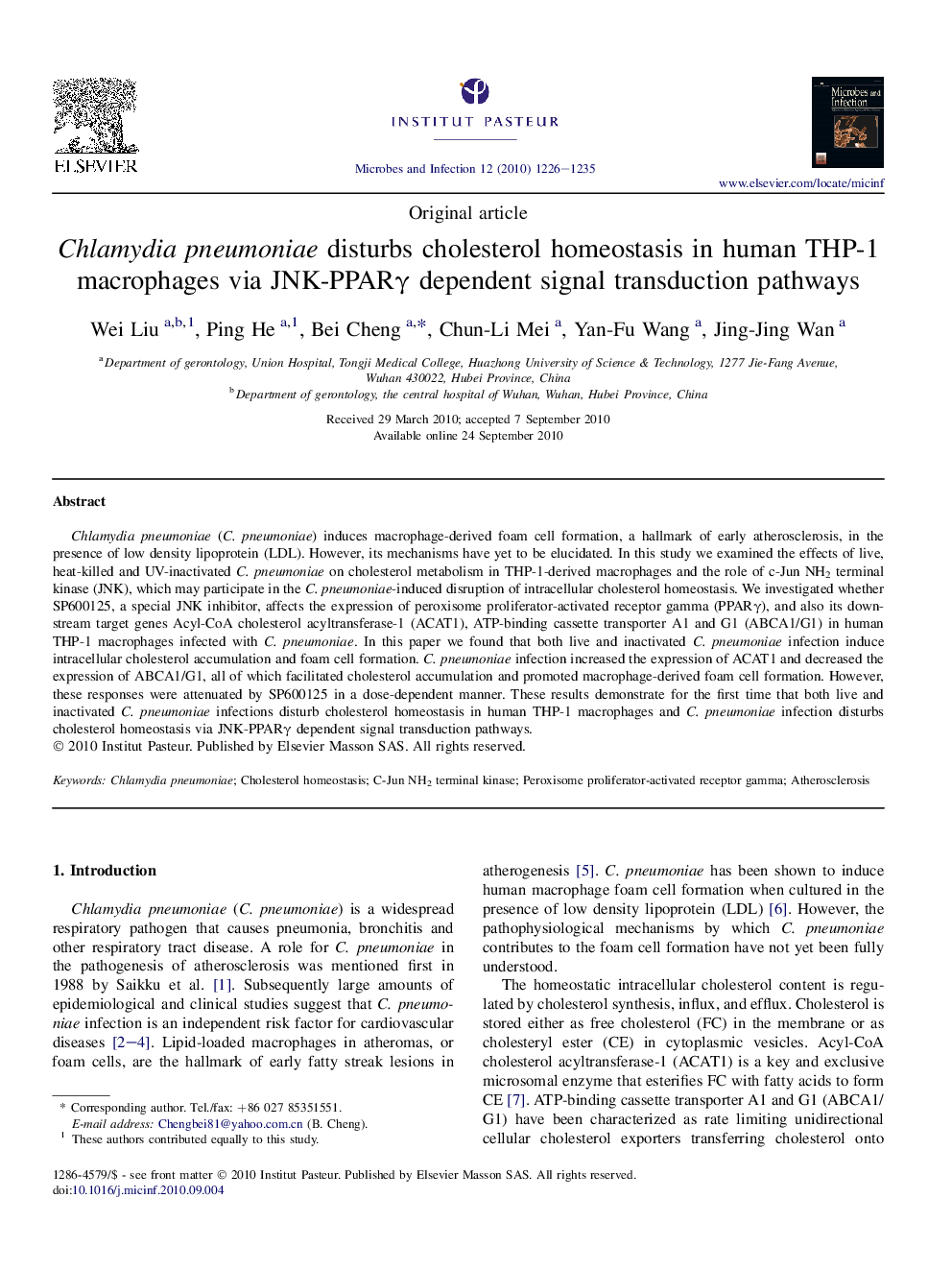| Article ID | Journal | Published Year | Pages | File Type |
|---|---|---|---|---|
| 3415103 | Microbes and Infection | 2010 | 10 Pages |
Chlamydia pneumoniae (C. pneumoniae) induces macrophage-derived foam cell formation, a hallmark of early atherosclerosis, in the presence of low density lipoprotein (LDL). However, its mechanisms have yet to be elucidated. In this study we examined the effects of live, heat-killed and UV-inactivated C. pneumoniae on cholesterol metabolism in THP-1-derived macrophages and the role of c-Jun NH2 terminal kinase (JNK), which may participate in the C. pneumoniae-induced disruption of intracellular cholesterol homeostasis. We investigated whether SP600125, a special JNK inhibitor, affects the expression of peroxisome proliferator-activated receptor gamma (PPARγ), and also its downstream target genes Acyl-CoA cholesterol acyltransferase-1 (ACAT1), ATP-binding cassette transporter A1 and G1 (ABCA1/G1) in human THP-1 macrophages infected with C. pneumoniae. In this paper we found that both live and inactivated C. pneumoniae infection induce intracellular cholesterol accumulation and foam cell formation. C. pneumoniae infection increased the expression of ACAT1 and decreased the expression of ABCA1/G1, all of which facilitated cholesterol accumulation and promoted macrophage-derived foam cell formation. However, these responses were attenuated by SP600125 in a dose-dependent manner. These results demonstrate for the first time that both live and inactivated C. pneumoniae infections disturb cholesterol homeostasis in human THP-1 macrophages and C. pneumoniae infection disturbs cholesterol homeostasis via JNK-PPARγ dependent signal transduction pathways.
